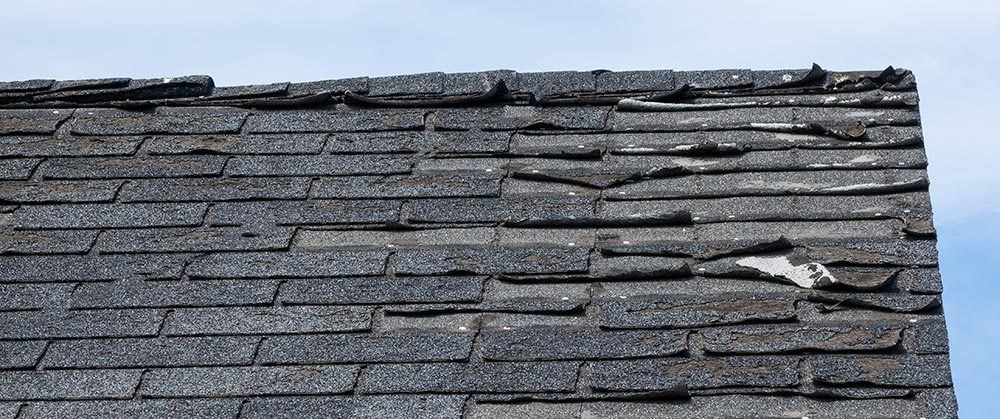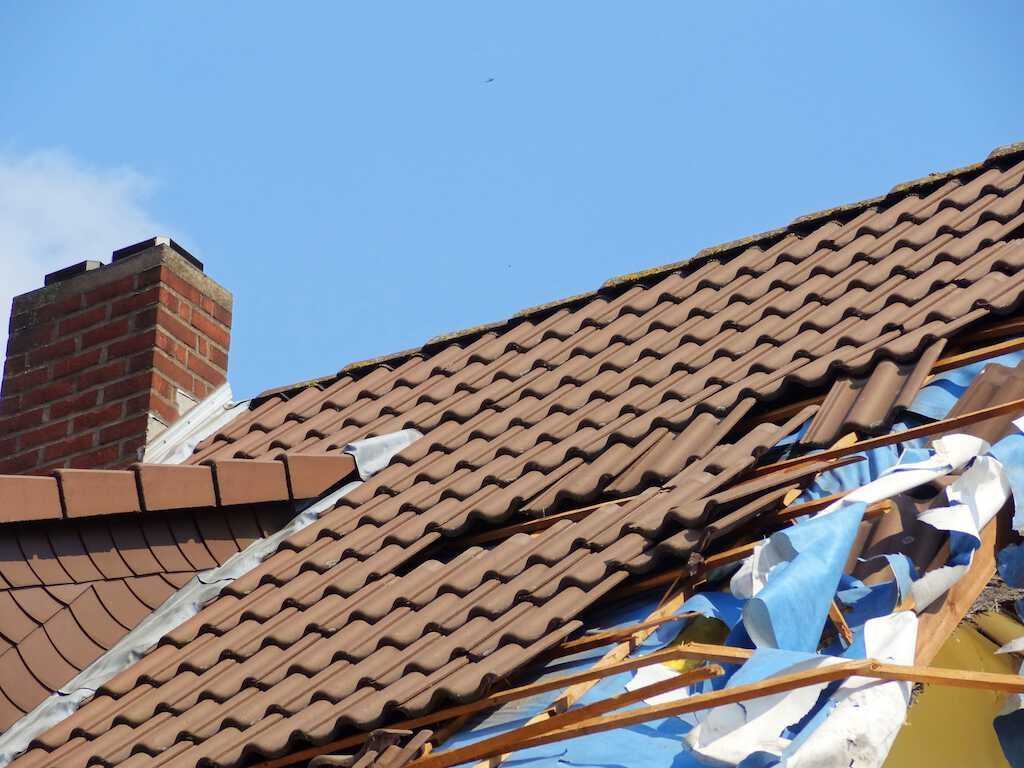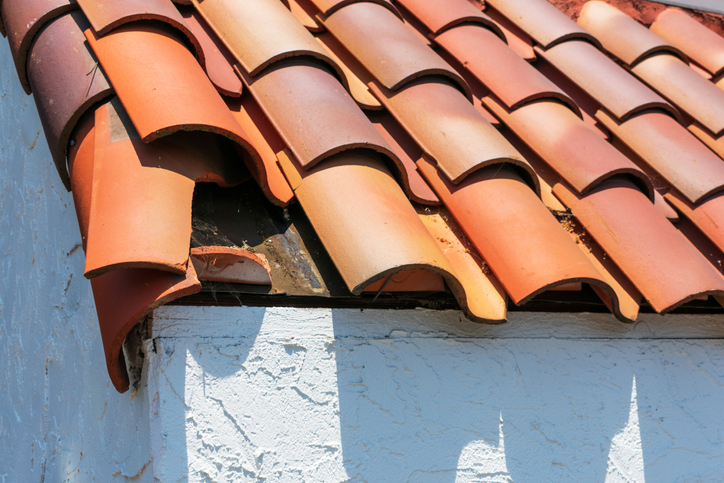
If you are in the process of filing a roof replacement insurance claim, here is everything that you need to know about this process. You will find out what to do before filing a roof replacement insurance claim and what happens after the claim has been filed. There are many things to consider when it comes time for an insurance company to pay for your new roof, so make sure you read all of these suggestions before deciding on one!
What is a Home Insurance Claim for Roof Damage
A roof insurance claim is a process that is used to file for damages or repairs to your roof. When filing a claim for the damage to your roof, you may get compensated in money, which can help you cover all of the expenses involved with replacing your roof.
Before filing a roof replacement claim, you will need to consider things: if your homeowner’s policy covers roof replacements, how much money is your deductible, and the limits on your insurance. These three things all play a role in whether or not you should file for a roof replacement through an insurance company. When filing a roof replacement claim, the first thing to consider is whether or not your homeowner’s policy covers these types of replacements. Knowing if you are covered beforehand can be very beneficial because the money will come from an insurance company, which may take some time to process and payout the claim.
Why should you file a claim for roof damage?
You should file a claim for roof damage because it can help you get compensated in money to cover your expenses. It will also take some stress off your shoulders when dealing with this situation and may even speed up the process.
If there has been any storm or weather event that damaged your roof, you should file a claim. This could be from something like powerful winds, hail, or even heavy rain that caused some type of damage to your roofing materials, and they are no longer usable for protection.
If you want this process to go as quickly as possible, it is best if the weather event has just happened to prevent further damage to your roof. That way, you can file the claim as soon as possible so that it can be taken care of before there are any more issues with rain or snow coming in and ruining other things inside of your house.

When should you file a claim for the roof damage? How long do you have before your policy expires
If you have experienced any type of water damage on top of your home or if it has been exposed to other weather events, you must file a claim as soon as possible. This will ensure the most accurate information about your damage and allow for proper documentation of any insurance claims you file.
When should you file a claim for the roof damage?
If any of these scenarios apply to you, you must contact us right away so we can ensure proper documentation and faster claims processing time:
• If your home has been exposed to water or other weather events.
• If you feel there is any damage to the structure of your roof. -If you have • experienced water or weather exposure.
• If you have experienced any type of water damage on top of your home.
• If it has been exposed to other weather events such as hail, wind, or flooding.
What to do before filing a roof replacement insurance claim.
Ensure that you have the correct information for your insurance company if they need it later on down the road. This includes your policy number, contact and coverage amounts, deductible amount, and other essential data.
• Have a professional assess the damages. This will ensure that you don’t miss anything, and it can also save your insurance company money if they need to send out someone else more specialized than what you have on staff at home. Get this done right away because once you file the claim, there’s no going back.
• Be as specific as possible when describing the damages. Insurance companies require detailed information to process your claim and get a roofing company out there fast. You will have more opportunity to negotiate if you are very clear about what needs replacing, but be careful not to exaggerate any problems that may seem significant at the time but are no big deal.
• Think about how you can make your claim worth more than it would be if you were to hire someone out of the blue and pay for all repairs yourself. This may include taking photos or video footage, documenting every step in the process with dates and times, keeping receipts for everything related to this incident, and even saving your old roofing materials, so you have proof of what was there before.
• Make sure the claim is filed within 60 days after either the loss or discovery, whichever happens later. You can file a claim now for damage that occurred in the past and still get it covered as long as you allow enough time to document everything beforehand.
• Keep all of this in mind so that you can make filing an insurance claim for roof replacement as smooth and stress-free as possible. You might be surprised at how much time, effort, and money you can save in the long run just by being organized about it from the start.
How can you make sure that your new roof will be covered under insurance
Keep in mind that your new roof needs to be identical or of the same quality grade as what was there before. If you have a shingle roof replaced with an Asphalt Shingle, it will not be covered under insurance unless you file for an upgrade on your home’s value first.
• Be sure all documentation has been filed before any repairs are made. This includes supporting photos and video showing the damage to your roof, which will be vital if there is a claim dispute later on down the road.
• Be aware of limitations for time frame coverage. Some policies have specific allowance windows depending on when you bought them or if they were renewed since then – this means that the repairs may have to be made within a particular time frame of when you file your claim.
Ensure all documentation is kept on hand, accurate, and updated if necessary after work has been done. This means that any receipts for materials or labor should remain in your possession until everything has been finalized – this could include photos taken during installation as well.
• Remember that your roof replacement insurance may not cover everything – you will need to make sure you have a complete understanding of what is and isn’t covered before making any final decisions or accepting the offer from an insurance company.
The bottom line: keep all of this information in mind, so there are no surprises down the road, but be sure to do your research and consult with a professional before making any final decisions.

Insurance claims process overview
The insurance claim process is a complicated one where you will have to jump through many hoops to receive the compensation that your home deserves. There are particular requirements for making roofing insurance claims, which is why this process can be so difficult and time-consuming if you don’t know what you’re doing from the start.
• The first step is to report the damage or loss as soon as possible. This doesn’t have to be done in person and can often be completed by phone or email, depending on your insurance company’s policies. Once you have filed a claim with them, they will send out an adjuster trained specifically for roofing claims. They will inspect your home and determine the extent of damage, as well as what should be covered under insurance.
• The adjuster may ask you to take photos or video footage throughout this process so that they can see exactly how extensive the damages are – make sure you have a folder on hand with copies of any documentation for future reference too.
• If the damage is extensive enough, you may be asked to make temporary repairs before your insurance company has a chance to send out their contractor. This could include covering holes in your roof with tarps or plywood until they can be fixed more permanently.
• Once all work has been completed and documented by both parties, they will submit their findings, and you will be compensated for the damages.
• Be sure to always keep receipts on hand from any materials or labor costs used in your roof repair, as this can often affect how much of a refund you receive. Also, you can make sure not to dispose of anything related to your claim without contacting your insurance company first, so they do not think you are trying to hide something.
• In some cases, your insurance may not cover everything that needs fixing – this is when it’s essential to read through all policy documents carefully and know precisely what they will or won’t pay for before accepting any final deals or offers from the adjuster. Don’t be afraid to ask questions if anything is unclear.
• Sometimes, the process can take a long time, but it is essential to be patient and keep all documentation on hand for when everything has been finalized, so there are no problems with your claim down the road. In some cases, you may have to wait several weeks or even months to receive any compensation from an insurance company – just make sure you have a clear idea of what is covered and isn’t beforehand, so there are no surprises.
What happens when an insurer approves your roof replacement payment?
The first is that your insurer will send you a check for the money they are willing to pay. At this point, it’s up to you whether or not you feel like accepting their terms and conditions on the agreement. If so, then there should be no issue with continuing forward with them. Just make sure both parties understand what is expected of them.
If you do not feel like accepting your insurer’s terms and conditions, this leads to the second step: negotiations between yourself and your provider. This can be done via phone calls or even email exchanges. In some cases, however, it may require a face-to-face meeting.
The primary purpose is to see if you can develop a solution that both parties are happy about. This may involve your insurer paying out more money or perhaps having them pay your deductible instead of the total amount. You may even want to have them take on some (or all) of the responsibility for finding and hiring reputable roofers.
In some cases, your insurer may be willing to work with you on a solution that provides both of these things (e.g., paying out more money and having them pay for the deductible). However, this does not always happen, so it’s best to be prepared if they refuse to agree upon the terms.
What if my current insurer denies my request for coverage because I’m not eligible for coverage? What can I do about it then?
The first thing you should do is to find out why they have denied your request. An insurance provider may not cover a specific type of damage or issue for different reasons- some more legitimate than others.
For example, if the reason for denying coverage was preexisting damages to your roof, then it’s probably time to find another provider. They would not be willing to cover an area that has already been compromised for apparent reasons.
On the other hand, if your insurer refused coverage because they didn’t believe your claim about the extent of damage (e.g., 100 square feet), then you may have a case there as well. It is possible that they just want you to prove there is indeed a problem and not just your estimate of the damage.
However, if it turns out that your claim was valid but only falls into a category where your insurer does not cover roof replacement services at all (e.g., insured by them for less than one year), then this may be tough for you to resolve. You may have to find another provider with such stringent requirements or wait until you are eligible for coverage.
When is it too late to file a roof replacement insurance claim?
It is never too late to file a roof replacement insurance claim. While most providers will only cover damages within the past couple of years, it can still be done under certain circumstances. If you have missed out on filing for coverage in time, then your best bet would be to make an appeal or call them up and see if they are willing to go through the process.
It is important to note that, even if your current insurer denies your request for coverage and you cannot find a suitable replacement in time, then they would still be on the hook for any repairs or replacements needed as part of their contract with you (e.g., home insurance agreement). It may just take longer for you to receive that money due to the situation.
Just make sure not to file multiple claims with different providers within a short period- this would most likely be denied and may also lead your premiums up in future years. You should only ask once about filing a claim (and have it paid out) for one roof replacement at a specific time.
How long does it take for an insurance company to pay out on a roof replacement insurance claim after filing your paperwork?
While there is no specific time frame for an insurance company to pay out on a roof replacement claim, it can vary between providers. Some will only take about 48 hours after receiving all of the necessary paperwork and information from you, while others may require up to three weeks due to more in-depth checks or other factors.
If they do not pay out within two weeks, you should contact your provider or insurer to find the reason for this delay. If they refuse to give a straight answer and/or do not pay it quickly enough (e.g., after one month), then there may be legal grounds for filing a complaint with the Financial Ombudsman Service- which is an independent company that is able to investigate disputes and provide you with advice on how to proceed.
We hope this post has helped answer some of your questions about filing a roof replacement insurance claim if you are not currently covered or have been denied coverage by your insurer. Understanding how things will play out in case that happens can help ease any concerns you may be having about it.
However, if you have any unanswered queries that we did not address in this article (or would like to provide feedback), then feel free to let us know by leaving a comment below or posting on our Facebook page. We always love hearing from the community and do our best to respond as quickly as possible!
